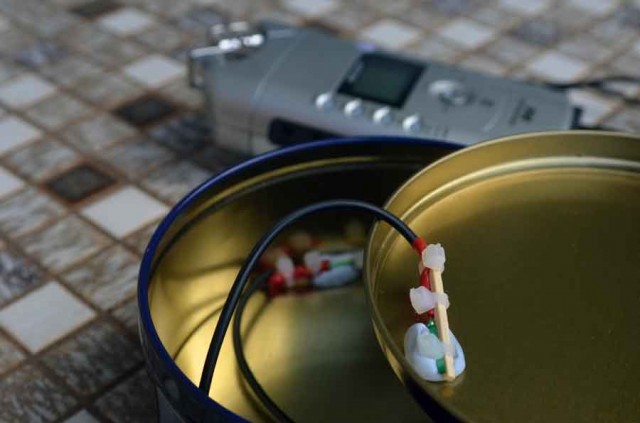You’ll find plenty of contact mic tutorials floating around the Web, but bassling (Jason Richardson) – working with a learned technique – has what I think is a really nice example, one that sounds really good. It’s easy to do, but unlike a popular tutorial (and one I’ve tried myself), you won’t wind up dis-assembling a Radio Shack piezo speaker. The result is an inexpensive, versatile microphone that will happily go places your conventional mic won’t, giving you new possibilities for sampling and sound design.
bassling credits his source:
This technique was taught to me by Alan Lamb when we worked together as part of the 2006 Unsound Festival. He’d developed this approach for recording ‘the wires,’ a large-scale aeolian harp modeled on telegraph poles he recorded in Western Australia.
Full tutorial:
How to make contact microphones [Bassling / Selectronica blog]
Here’s what it sounds like:
Piezo contact mic demonstration using a biscuit tin as a hand drum by bassling
I’d love to hear from readers: have you built contact mics? Which technique worked best for you?
And, if you try this one, any suggestions on various suppliers for the piezo crystal part itself? (Particularly in the US, Germany and continental Europe, UK, Japan, other places we have lots of readers.)
More:
Creme Dementia’s handmade bottle cap mics, on GetLoFi
Tutorials on the “Radio Shack” approach (though I like the one above better):
furious contact microphone assembly
Make a DIY Contact Microphone
